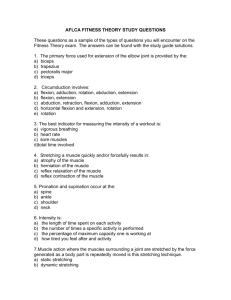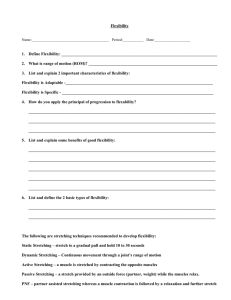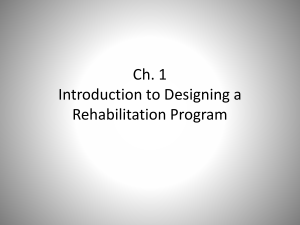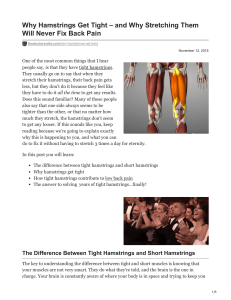Flexibility Defined
advertisement
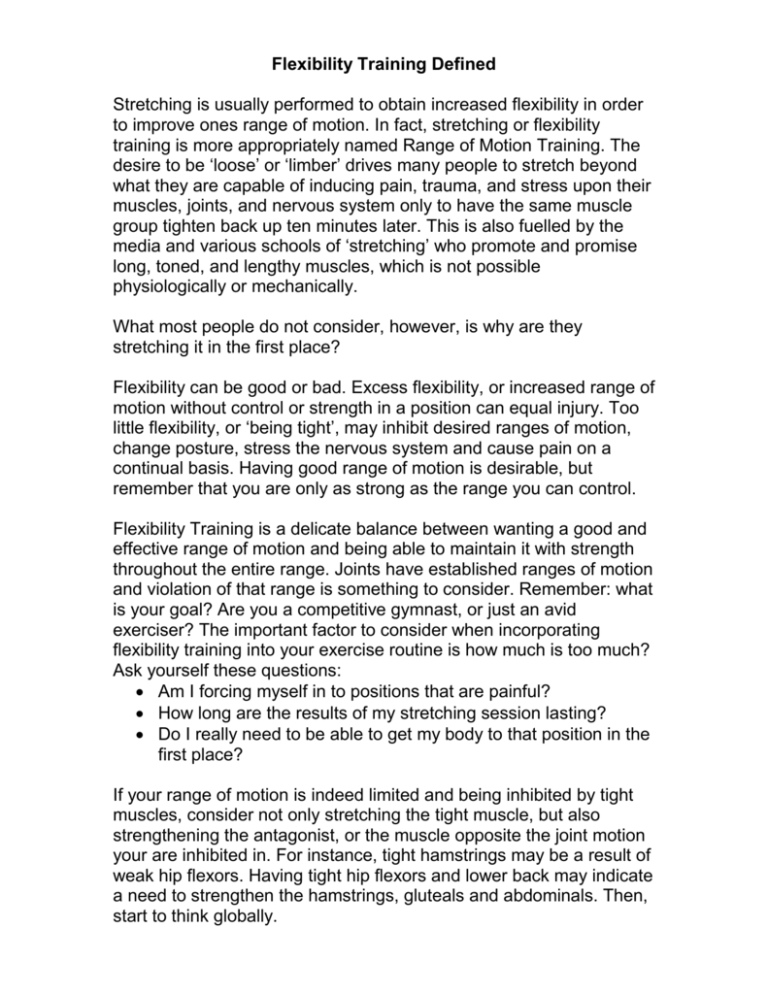
Flexibility Training Defined Stretching is usually performed to obtain increased flexibility in order to improve ones range of motion. In fact, stretching or flexibility training is more appropriately named Range of Motion Training. The desire to be ‘loose’ or ‘limber’ drives many people to stretch beyond what they are capable of inducing pain, trauma, and stress upon their muscles, joints, and nervous system only to have the same muscle group tighten back up ten minutes later. This is also fuelled by the media and various schools of ‘stretching’ who promote and promise long, toned, and lengthy muscles, which is not possible physiologically or mechanically. What most people do not consider, however, is why are they stretching it in the first place? Flexibility can be good or bad. Excess flexibility, or increased range of motion without control or strength in a position can equal injury. Too little flexibility, or ‘being tight’, may inhibit desired ranges of motion, change posture, stress the nervous system and cause pain on a continual basis. Having good range of motion is desirable, but remember that you are only as strong as the range you can control. Flexibility Training is a delicate balance between wanting a good and effective range of motion and being able to maintain it with strength throughout the entire range. Joints have established ranges of motion and violation of that range is something to consider. Remember: what is your goal? Are you a competitive gymnast, or just an avid exerciser? The important factor to consider when incorporating flexibility training into your exercise routine is how much is too much? Ask yourself these questions: Am I forcing myself in to positions that are painful? How long are the results of my stretching session lasting? Do I really need to be able to get my body to that position in the first place? If your range of motion is indeed limited and being inhibited by tight muscles, consider not only stretching the tight muscle, but also strengthening the antagonist, or the muscle opposite the joint motion your are inhibited in. For instance, tight hamstrings may be a result of weak hip flexors. Having tight hip flexors and lower back may indicate a need to strengthen the hamstrings, gluteals and abdominals. Then, start to think globally. A ‘tight’ muscle is just an indication that something is wrong either in your activities of daily living, posture, exercises you perform, or injury. You may want to seek the guidance of a qualified technician to analyze your posture, gait, and other movements. Another thing to consider is the nervous system and its ability to provide effective neurological input to the muscles. A tight muscle is generally one who is being overworked or placed under due stress. Many times, strengthening the opposite muscle group and developing a well-rounded strength training program is the answer. One of the many benefits of the Stretch Out® is that it provides an arena to assist the exerciser into a position of potential weakness and provide an anchor to which force may be applied to strengthen the muscle at that point in the range of motion.

